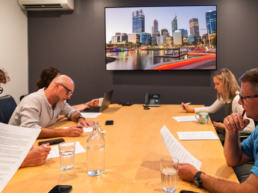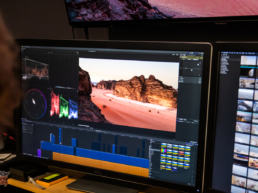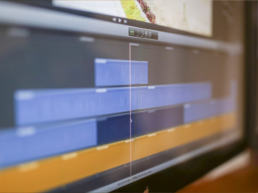
In the last 4 years, Tourism Media has produced an enormous amount of travel articles.
Impressive volume, right? But what’s even more impressive is that each piece of our curated editorial content is thoroughly researched and edited.
Our editorial process is overseen by our chief editor, Francene Ridley. Francene has a Bachelor of Arts (English and Anthropology) and a Graduate Diploma in Arts (Writing, Editing and Publishing), both from the University of Queensland, and nearly 10 years experience in writing and editing.
I asked Francene to explain how Tourism Media maintains a high quality of travel content while producing it on such a large scale. The system has taken many years to perfect, but now we’ve got it down to a fine art and there is no one better positioned to explain our system.
Take it away, Francene:
Our content is created in six different stages, each one requiring a specialist in that particular area. Using specialists lifts the quality of the writing dramatically. The more sets of eyes on the copy the better. It makes a big difference to the accuracy and quality of the writing.
Stage One: Commission Writer
Tourism Media has a hand-picked team of talented writers who live all over the world: Argentina, Spain, the States, Scotland, England and Australia. Each writer has a passion for travel.
New writers go through a bruising training period during which they are coached on our very specific brief – our writing style guide is an indispensable tool in this process!
After extensive feedback on their trial writing, the writer is ready to take on a bigger task.
Tourism Media’s content management system (known as Gearbox) allows me to run a report on places we call “Ready to Write”. This means that we have published photos for a destination but no accompanying copy. Destinations are prioritised according to search engine demand and other priority data, but always with an eye on variety and interest as well.
Based on that data, I assign destinations to writers. Within that destination, I also specify a number of places that travellers would like to visit (known as Places of Interest or POIs).
Gearbox is also used throughout the entire process to keep track of the progress of each project and to pass the writing onto the next person in the team.
Stage Two: Writing
Writers conduct their own research and usually get articles back to me within about a week. We allow writers to access our photos to help them get into the right frame of mind about what a location may look like and in some cases we will also provide them with additional data we have collected through our co-operation with the local tourism body.
Stage Three: Edit
The articles are then moved on to one of our editors who checks the copy against our writing style guidelines. Has the writing met the brief? If yes, then any minor changes are made and it’s on to stage four. If no, the copy is sent back to the writer for reworking, along with feedback as part of a process of continual improvement.
Stage Four: Fact Checking
We have a number of specialist fact checkers at the Tourism Media headquarters in Brisbane who are given the brief of ensuring all the information in all the writing (and also the scripts for the Expedia Vacation Travel Guides) is accurate.
Between them, they have years of experience in fact checking and it’s almost impossible to get any unverified information past them. Sniffing out incorrect information is a skill akin to black magic to an outsider. It can take some time to master but our guys are experts at tracking down authoritative information and sometimes go to extraordinary lengths to verify information.
Stage Five: Proofreading
At this stage, we start the process of finessing – almost literally making sure we dot the i’s and cross the t’s. Our grammar and punctuation police move in and make sure that all hyphens, commas and apostrophes are exactly where they should be. Even our in-house directors and managers use our writing team to check on our own proposals and reports. It’s a process that can bring even the most experienced writer back down to earth.
Stage Six: Publishing
Once this process is completed and all stages have been approved, I load the finished text and mark it as ready to be published.
Within 24 hours, the text is pushed live and published across Expedia.






